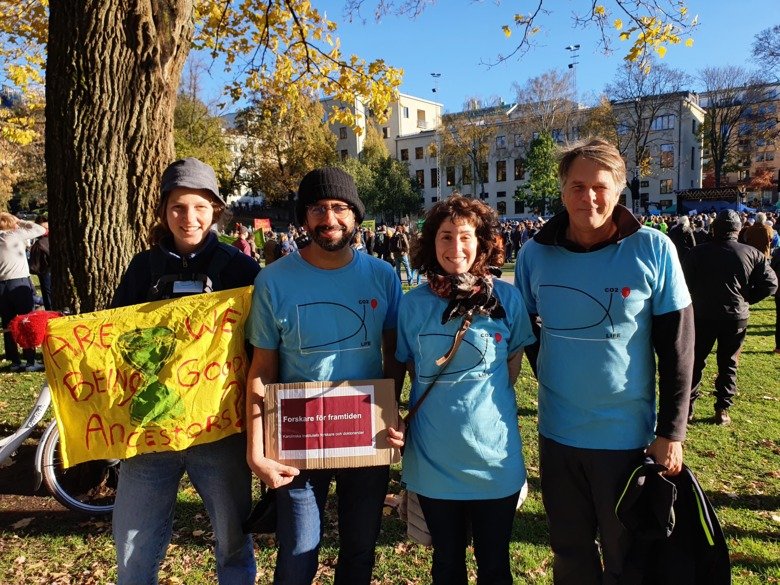Climate network: There are lots of ways to contribute to a better climate

On 31 October, the 13-day UN climate summit COP26 began with the aim of accelerating measures to meet the goals of the Paris Agreement and the UN Climate Convention. Shervin Shahnavaz, member of the climate network at KI, has in recent weeks focused intensely on climate issues as a result of the meeting.
What has KI's climate network done in connection with COP26?
In the run-up to COP26, several of us participated in the global climate manifesto on 22 October together with Researchers Desk, a non-profit association with climate-engaged researchers who meet and talk to young people and the public at the manifestations. Some of us are currently formulating a proposal to the Climate Parliament with proposals for measures related to climate change and the health of children and young people. In COP26, health issues related to climate change have been given special attention thanks to the WHO Conference on the subject. The climate network will follow up the conference on 22/11 at 12.00 and everyone is welcome to participate, says Shervin Shahnavaz, lecturer at the Centre of Excellence for Psychotherapy, at the Department of Clinical Neuroscience.
How do the UN climate goals correlate with KI's activities?
The UN’s climate goals are simply about keeping the global temperature increase at 1.5 degrees. Extreme heat, floods, droughts, forest fires, hurricanes, and pandemics caused by climate change directly affect human health. These, in turn, cause traumatic experiences, poverty and homelessness, insecurity and injustice, which indirectly impair people's health. KI, therefore, with the vision of achieving better health for all, has an obvious and important role to play in the work to counter climate change. The WHO’s report “Health Arguments for Climate Action” is an inspiration in this context.
How has climate work at KI changed in recent years?
In recent years, KI has worked intensively with the integration of the SDGs from the 2030 Agenda into its operations and has developed a climate strategy that now characterises KI's new action plan for the climate and the environment. These are in line with the Paris Agreement and cover several areas. Several new networks focusing on climate issues both at KI and in collaboration with other universities are under development, for example, Stockholm trio and Viable Cities. The Environment and Sustainable Development Council and our environmental coordinators with the support of the President and the Vice-President have played a pro-active role in this work.
What can we at KI do to contribute?
There are lots of ways to contribute, for example by choosing climate-friendly travel by train or having digital meetings instead of air travel, which is one of KI's largest emission areas. Through collaboration with the local sustainability and environmental representative, there is an opportunity to help with KI's climate goals and the implementation of an action plan at your own workplace. Through engagement with the climate network, contact with Environment and Sustainable Development Council and participation in the activities arranged at KI, ideas, new networks, and research projects on climate and health issues can be created. Last but not least, it is important as a teacher to introduce climate issues into the teaching.
About KI's climate network
KI's climate network was formed by KI employees to bring together climate-engaged employees so they may together contribute to climate-smart and sustainable work throughout the organization. Today, some 40 members from seven departments and several divisions have joined.
